How Long Do Piglet REALLY Stay With Their Mothers?
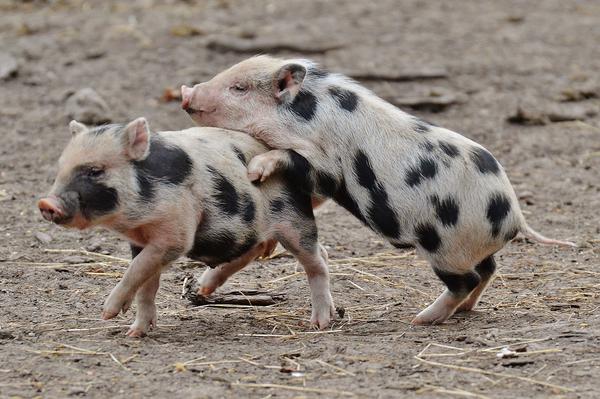
Do piglets really need their mamas?
I mean, I get it, animals have instincts and all that jazz. 😊
But come on, don't we all feel a pang of empathy when we see those cute little snouts nursing away?
Don't worry, I hear you.
You're not alone in wondering how long these squealing bundles of joy stay with their mothers.
Well, let's satisfy that curiosity together.
Ready?
Let's dive into the fascinating world of piglet and mama pig relationships.
How Long Do Piglets Stay with Their Mothers?
Piglets typically stay with their mothers for 6 to 8 weeks before being weaned. During this time, they rely on their mother's milk for nourishment, but gradually become more independent after three months.
The bonding time between piglets and their mothers is super important.
It affects how they act around others and deal with stress.
To really understand how piglets naturally act and get weaned, you gotta know how long they stay with their moms.
Here's the deal:
Usually, piglets hang with their moms for about 6 to 8 weeks before they get weaned.
During this time, they need their mom's milk to eat and learn.
Lady pigs give birth to litters of like 10 to 14 piglets after being pregnant for about 115 days.
In the wild or on a free-range setup, piglets chill with their moms until they're around three months old.
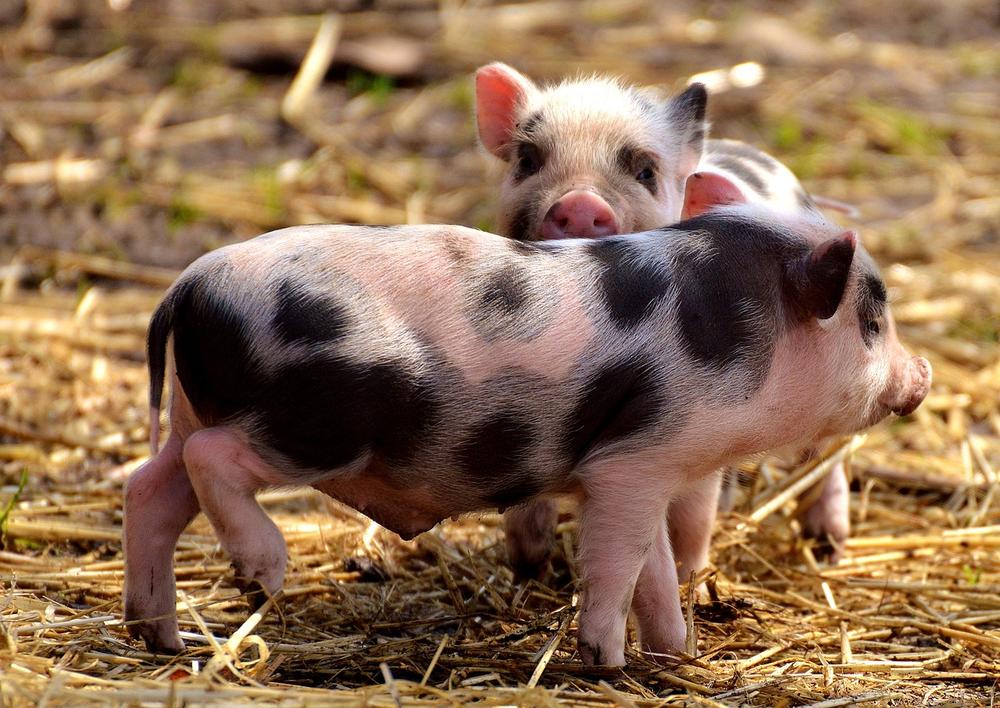
This extra time lets them learn survival stuff from their moms and grow emotionally.
Now, here's where it gets interesting:
Even though piglets start munching solid food and drinking water in their second week, they still depend a lot on their mom's milk for around seven weeks.
Normally, nursing stops when piglets are about 6 weeks old, and that means weaning starts.
As they transition, piglets become more independent little by little as they check things out and learn to eat solid food.
But, here's the thing:
When exactly and how long weaning goes down can change depending on different situations and farming methods.
So bear in mind, piglets generally kick it with their moms for 6 to 8 weeks before they stop nursing.
But they keep growing and learning for a few more weeks while mom keeps a close eye on them.
But here's what I find fascinating:
Piglets' natural behavior and weaning practices are influenced by various factors, including their strong suckling instinct, social interactions within the litter, and the actions of their protective mothers.
The Natural Behavior of Piglets and Their Mothers
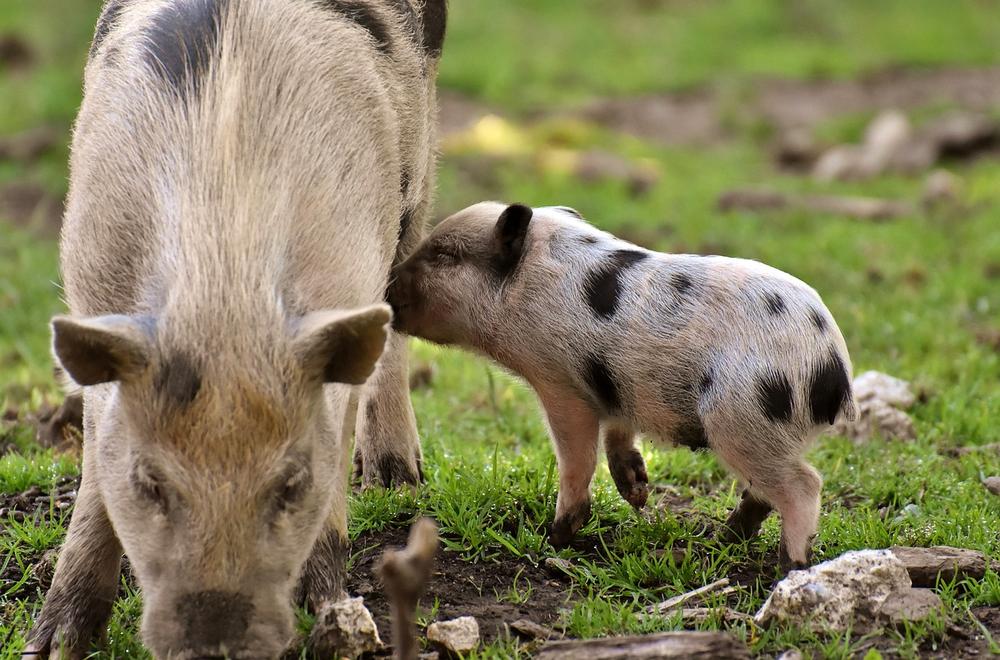
Here's a breakdown for you on piglet behavior:
- Piglets have this strong urge to suckle, which helps their moms produce milk.
- It's good to keep piglets from the same litter together so they can socialize.
- The birthing process takes about three to four hours.
- Believe it or not, piglets are born with eyes wide open and ears ready to go, plus they can even run not long after being born. 😮
- To avoid getting tangled up and suffocating, rough materials like straw help piglets break free from their birth sacs.
- Right after giving birth, sows take a quick break from the nest to do their business elsewhere and prevent any potential blockages.
- The pecking order gets established right away when it comes to sucking, with the strongest piglets heading straight for the front teats.
- Weaned piglets might do some weird stuff like start sucking on things or even their siblings' body parts.
- Setting up regular feeding times throughout the day helps piglets get into the habit of eating together.
- Once separated from their mom, piglets gotta figure out how to fend for themselves.
- Sadly, sometimes mother pigs accidentally crush newborn piglets during delivery. It happens, unfortunately.
- Mother pigs get super protective of their babies and won't hesitate to attack anyone who tries to step in.
- When a pig's teats are swollen and the vulva is getting bigger, that basically means she's about to pop out some new piglets real soon.
- Each little piggy has its own favorite teat to suck on, and the ones toward the front produce more milk.
Factors Affecting the Duration of Piglet-Mother Bonding
How long do piglets stay with their mothers?
Well, there are a few important factors that determine the duration of their bonding.
Let's get straight to the point and dive into these key factors.
First things first, the environment plays a big role in how long piglets stay with their mothers.
If they have plenty of space and opportunities for social interaction, they're more likely to stick around longer.
In larger, open environments, piglets have the freedom to stay with their mothers for an extended period of time.
On the other hand, if they're kept in cramped spaces without much room to move, their bonding might be cut short.
We also need to talk about challenges related to piglet rearing.
Things like access to water and a warm environment post-separation can impact the bonding process.
So it's crucial that you give piglets what they need during this important bonding period.
Unfortunately, intensive farming systems often create stressful environments for pregnant sows.
Limited space and restricted movement can lead to stress and behavioral disorders, which in turn affect the piglet-mother bonding process.
These situations might require some interventions to meet the needs of the sows, but they won't fully address their natural instincts and behaviors.
Now let's talk about the health of the sow.
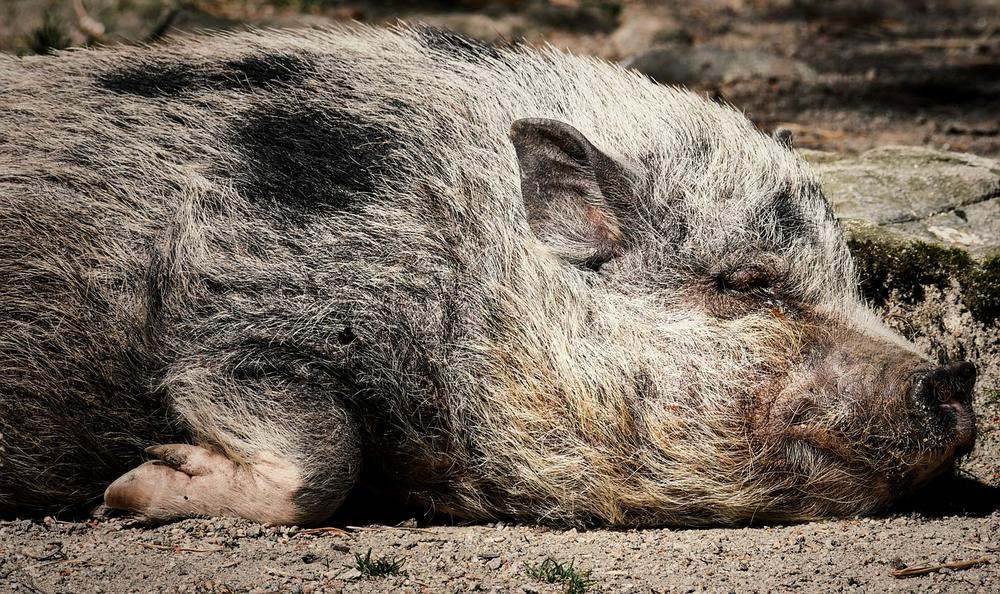
Sometimes, when a sow has a large litter, she might become severely depleted.
In those cases, earlier weaning becomes necessary for the well-being of the mother pig.
It's not ideal, but sometimes weaker piglets even have to be transferred to foster sows or hand-fed to make sure they survive.
On average, the pregnancy duration for sows is about 3 months, 3 weeks, and 3 days.
With proper care, this allows for at least two litters per year, each consisting of around 10 piglets.
That means you need to provide adequate support and resources to pregnant sows to help their piglets develop successfully.
And to keep the sows calm and comfortable before giving birth, straw bedding can go a long way.
The weaning period for piglets varies based on their readiness and the sow's condition, with certain methods choosing a 28-day period to slowly shift piglets from mother's milk to solid food.
Lastly, maintaining the right temperature is crucial for proper piglet care.
Make sure the housing stays between 80-90 degrees Fahrenheit to keep those little piggies warm and cozy.
Understanding all these factors will give you valuable insights into how piglets naturally behave and how their weaning practices are influenced by their environment.
So there you have it – everything you need to know about how long piglets stay with their mothers! 🐷
Now, here's the deal:
Have you ever wondered how piglets make the crucial transition from their mother's milk to solid food?
I'm about to reveal the key steps and strategies for smooth weaning that ensures optimal growth and development.
Get ready to dive into this fascinating process and discover the secrets behind successful piglet nutrition!
Optimizing Piglet Weaning Practices for Smooth Transition and Growth
To ensure piglet weaning goes smoothly and they grow well, follow these 11 steps:
- Give piglets access to creep feed early on so they can socialize and explore.
- Ease them into weaning by gradually starting the process between weeks 5 and 6.
- Find feeds that taste and smell similar to what they're used to for an easier transition to solid food.
- Make sure piglets easily accept the new feed to ensure optimal growth.
- Look out for signs of readiness like independent eating and venturing out of the nest.
- Depending on their breed and development, wean piglets between 4-8 weeks old.
- Introduce dry creep feed a few days before weaning to help them adjust.
- Stick to a similar starter feed during the transition to keep things familiar.
- Aim for piglets to weigh at least 7.5 - 8.0 kg at weaning, with no more than 10% weighing less than 6 kg.
- Ensure weaker piglets get access to the front teats for enough nourishment.
- Start introducing solid food when they're around 2 weeks old for gradual feeding.
By adhering to these instructions, you can enhance the weaning of piglets and lay the foundation for their robust development.
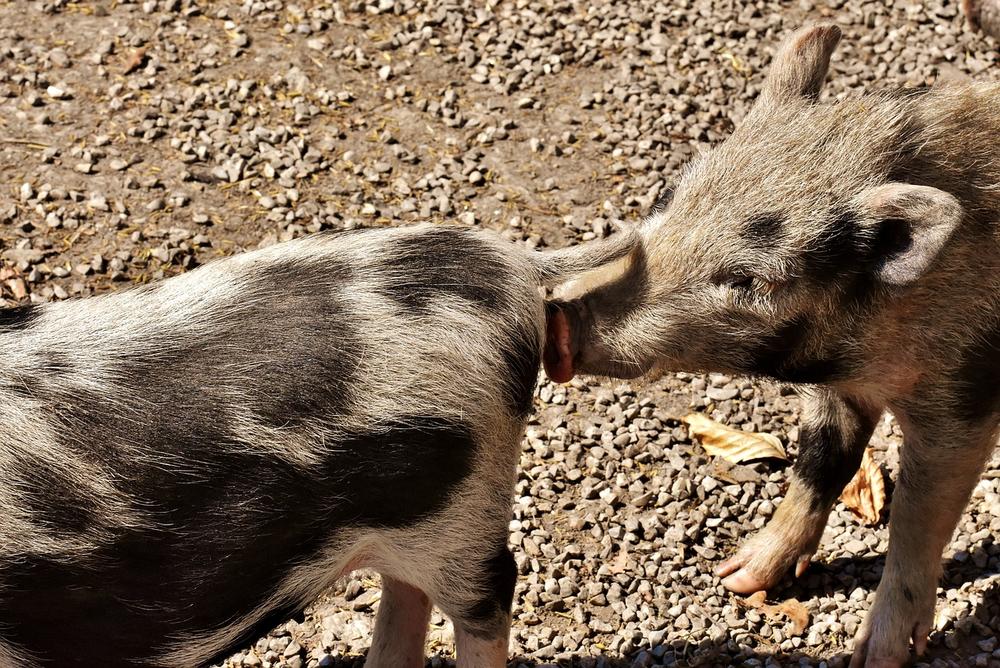
Now, here's the deal.
Would you like to learn about how sow-piglet bonding can impact piglet behavior and growth?
This crucial aspect directly affects their in essence well-being and sets the stage for successful weaning practices.
Keep reading to uncover the fascinating dynamics of mother-offspring bonding and its profound implications...
Enhancing Piglet Weaning Through Mother-Offspring Bonding
Here's how you can improve piglet weaning and make your pig farming better:
- Pick the right feed: Choose feeds that smell and taste like their mother's milk. This helps piglets eat easily and prevents them from biting out of stress.
- Make sure the feed is digestible: The chosen feed should have ingredients that are easily digestible, just like the creep feed they've had before. This makes it easier for piglets to absorb nutrients and grow well.
- Keep the feed fresh and accessible: You ought to always provide piglets with fresh and easily reachable feed. Keep replenishing their feed regularly to ensure they get proper nutrition.
- Prep the nursing area: Before moving the piglets to the nursing facility, clean and disinfect the rooms thoroughly. Also, ensure the rooms are warm enough, with a temperature of at least 77°F, so the piglets feel comfortable and stay healthy.
- Aim for higher weaning weight: If you want piglets to grow better and reduce mortality during fattening, try increasing their weaning weight. Monitor their weight regularly and adjust feeding methods accordingly.
Creating a stronger connection between mothers and their offspring and improving the process of piglet weaning can be achieved by implementing these suggestions.
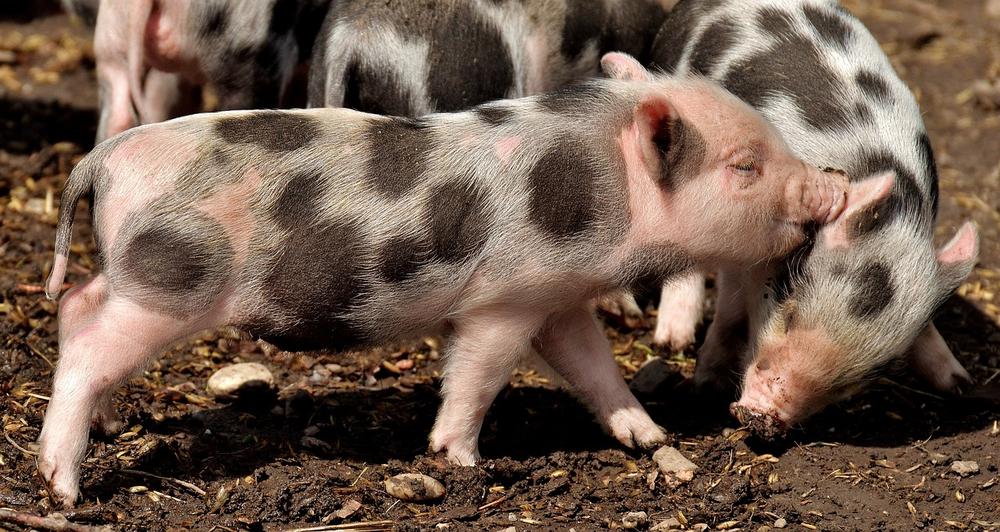
This will result in healthier piglets and a more productive farm. 😀
Improving Weaning Practices and Maternal Instincts in Commercial Pig Farming
Improving weaning practices and maternal instincts in commercial pig farming is crucial for the success and profitability of the operation. Here are five key strategies to consider:
- Selective breeding: Prioritize sows with strong maternal instincts during the breeding process. This can be done by selecting sows that have a history of successfully raising piglets and exhibit nurturing behavior.
- Proper nutrition: Provide optimal nutrition to the sow during pregnancy and lactation. A well-balanced diet will help ensure maximum milk production and promote healthy piglet growth.
- Early socialization: Start exposing piglets to human interaction from an early age. This helps them become more comfortable around humans, reducing stress during weaning and handling procedures.
- Weaning management: Gradually separate piglets from the sow over time, allowing them to adapt to the change. Provide a warm and clean environment for piglets after weaning to minimize stress and encourage smooth transition.
- Technology utilization: Take advantage of platforms like 333 Connect to connect with other professionals in the swine industry. Sharing experiences, knowledge, and advancements in swine production can contribute to improving weaning practices and enhancing all in all pig farming operations.
Pig breeders can enhance weaning methods and foster stronger maternal instincts in their sows through the utilization of these strategies, leading to healthier and more efficient piglets.
The Impact of Early Weaning on Piglet Health and Development
Early weaning in piglets, especially in intensive farming systems, can disrupt natural gut development, leading to long-term digestive issues. Separating piglets from their mothers prematurely can negatively affect their health and development, as mother's milk is vital for their immune and digestive systems.
Let's dig into the details of piglets and how they naturally behave.
So how long do piglets stay with their mothers?
Well, in the wild, it's usually around 8 to 12 weeks.
This timeframe is crucial as it ensures that piglets get all the necessary nutrients and build a strong immune system.
However, things are different in intensive farming.
Piglets are weaned much earlier, typically between three to five weeks.
Now, you might ask why this is such a big deal?
Taking piglets away from their mothers so early can have serious consequences.
The weaning process is stressful for them and can affect nutrient absorption for several days.
And let me tell you, dehydration becomes a real concern.
That's why you have to ensure they're fed properly and given the right nutrition.
Electrolytes can also help keep them hydrated.
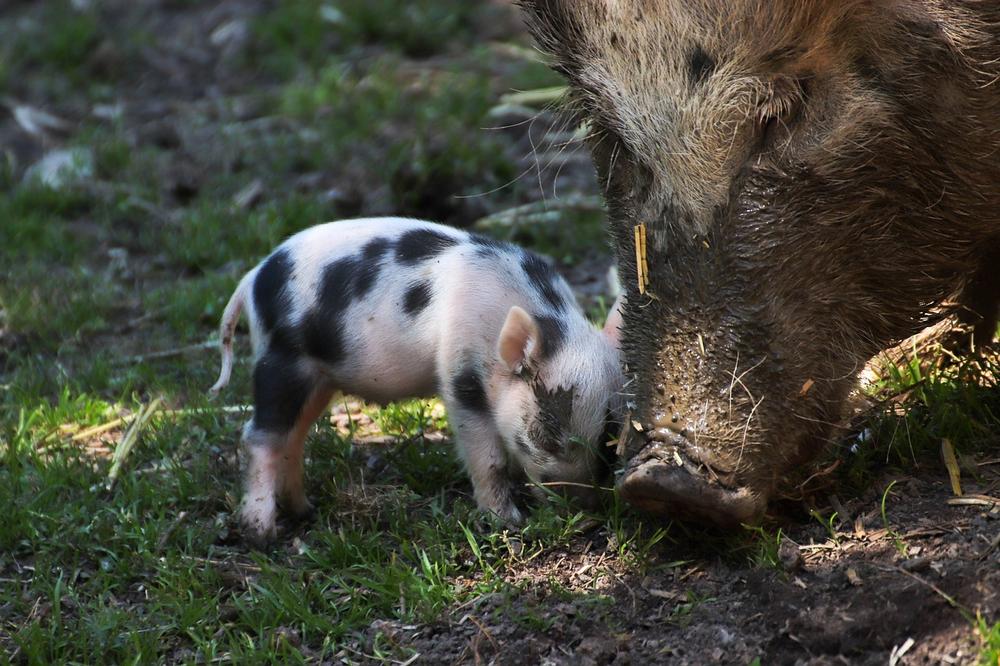
Early weaning is distressing for the little ones.
Imagine being separated from your mother when you're just a few weeks old!
They're not happy about the sudden end to nursing, which adds to their stress.
In fact, piglets often cry to express their unhappiness.
It's worth noting that tail docking, a common practice in intensive farming, doesn't necessarily address the needs of piglets.
Instead, it can cause serious injuries and infections.
The weight of piglets at weaning can vary depending on when they were weaned.
Weaning at the optimal time, around 28 days, results in better future productivity for piglets.
But here's something to consider:
A significant number of newborn piglets don't survive beyond six weeks.
That's why providing colostrum, which contains important antibodies, within an hour of birth is absolutely vital.
It gives piglets the best chance of survival and sets them up for a healthy life.
Optimal Weaning: Ensuring Piglet Health and Growth
Key Takeaways:
- Piglets typically stay with their mothers for 6 to 8 weeks.
- Female domestic pigs give birth to a litter of 10-14 piglets.
- Piglets rely on their mother's milk for nourishment for the first 7 weeks.
- Social interaction is important for piglets.
- Piglets are born with open eyes and ears, able to run shortly after birth.
- Rough litter like straw helps piglets free themselves after birth.
- Sows briefly leave the nest after birth to defecate and urinate.
- Suckling order is quickly formed, with stronger piglets occupying the front teats.
- Piglets may exhibit substitute actions like sucking objects or siblings' body parts.
- Weaning should begin between week 5 and week 6.
- Pigs should reach a weaning weight of at least 7.5 - 8.0 kg.
- Feeds should resemble the smell and taste of mother's milk.
- Fresh and easily accessible feed should be provided for piglets.
- Economic analysis is important in evaluating weaning practices in commercial pig farming.
- Removing piglets too early can negatively impact their health and development.
And that's all for today folks.
You've reached the end of my blog post, so I wanted to ask you something: Did you enjoy reading it? I put a tremendous amount of effort into creating comprehensive and helpful blog posts. It truly takes up quite a bit of my time (in a positive way), which is why I would sincerely appreciate it if you could click on any of the social sharing icons to share this post with others. Thank you so much!
Until next time,
-Chris Campbell